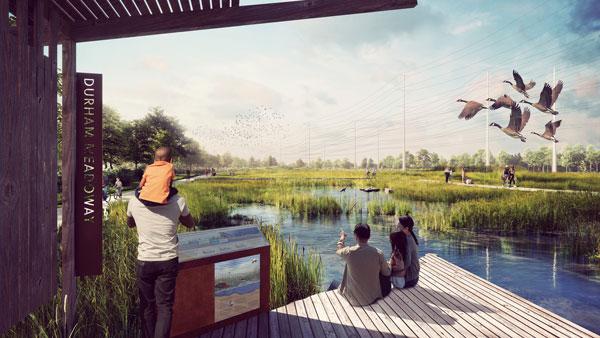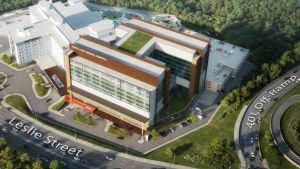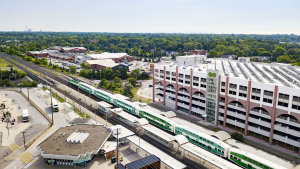A master planning exercise undertaken for a 30-kilometre hydro corridor in Ontario’s Durham Region will redefine active transportation for the post-pandemic era and inject new connectivity and community integration into the region, project proponents suggest.
And for designers, engineers and constructors, the represents a mobility strategy that will create multiple project opportunities such as potential underground pathways, innovative road crossings and extensive cycling and walking infrastructure.
Durham Regional Council endorsed the study in June, marking the end of stage one of the planning process. The study was led by
“Toronto and other GTA areas have been looking at these corridors for the longest time and using them in a way that it’s not only a path that you can actually use to traverse and circulate, but also to create places for gathering and recreation,” explained SvN landscape lead .
“It’s 30 kilometres long. I think it has a little bit of everything.”
More than active recreation
The Durham Meadoway Visioning Study was developed through extensive stakeholder collaboration, including Durham Region, its four municipalities of Pickering, Ajax, Whitby and Oshawa, agencies such as the Toronto and Region Conservation Authority and Central Lake Ontario Conservation Authority, Infrastructure Ontario, Hydro One, Parks Canada and the general public.
Beyond active recreation spaces, the vision includes educational markers and ecological reinforcement, with, for example, gathering spaces with signage at important wetlands, said Paez Alonso.
He said the Meadoway system will connect communities within the region and contribute to the regional transportation network, helping to integrate Durham Region into the Greater Toronto Area.
“It requires big infrastructure projects,” said Paez Alonso. “One of the biggest challenges is, we have a lot of creeks and ravines and a couple of rivers to cross, and that is one of the greater elements of construction throughout the corridor that will require lots of engineering and planning ahead and, of course, resources.”
Covid triggered an awareness of the need to incorporate a full range of assets cities require to grow, Paez Alonso said, including open spaces for everyone and multi-use paths.
“Even though I’ve seen many different master plans for cycling infrastructure being developed in the last few years in different municipalities, it is actually the last four years that have had a chance to catalyze opportunities for infrastructure improvements,” he said.

Toronto railpath debate
Paez Alonso suggested that the current debate over the West Toronto Railpath project, with its $149-million price tag, could spur a discussion of how active transportation not only serves current citizens but changes how communities will live in the future.
“One of the biggest ideas to be supported is this access to a place where you can actually have increased physical health,” he said.
“All the different priorities are so important.
“What I think we sometimes fail to realize is…how these corridors start to change how the people actually live, and use everything surrounding them, how actually people that are close to this asset become very mobile, and they can be at a place and bring their families in a very safe environment and move throughout the city.”
The visioning study is considered the first of several planning phases that will take the Durham Meadoway from concept to construction. Region of Durham director of planning Colleen Goodchild commented, “This project has the opportunity to promote environmental stewardship, enhance social well-being, and spur economic vitality throughout the Region.”
Follow the author on X/Twitter @DonWall_DCN










Recent Comments
comments for this post are closed